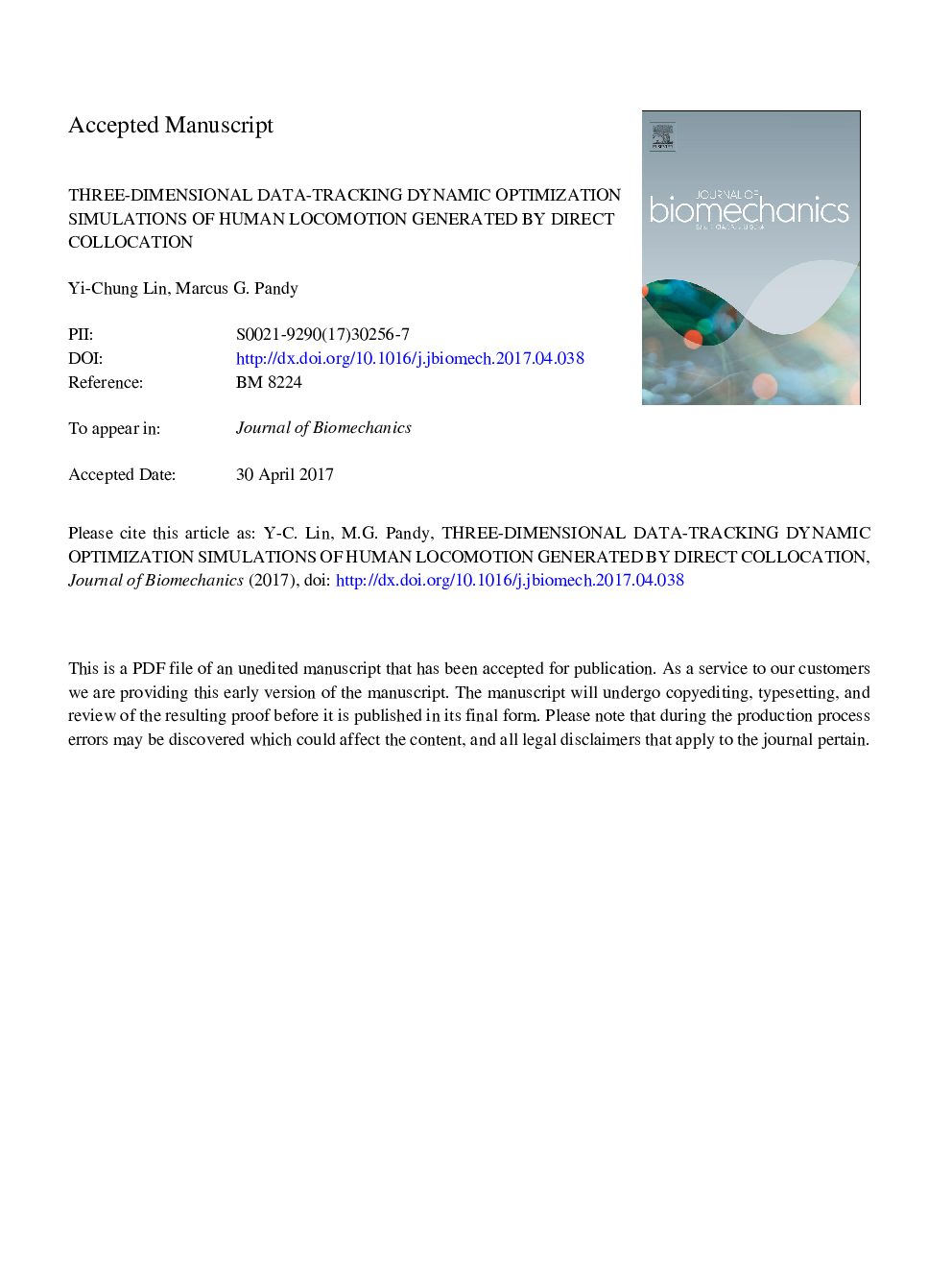| کد مقاله | کد نشریه | سال انتشار | مقاله انگلیسی | نسخه تمام متن |
|---|---|---|---|---|
| 5032252 | 1471105 | 2017 | 31 صفحه PDF | دانلود رایگان |
عنوان انگلیسی مقاله ISI
Three-dimensional data-tracking dynamic optimization simulations of human locomotion generated by direct collocation
ترجمه فارسی عنوان
شبیه سازی بهینه سازی دینامیکی ردیابی داده های سه بعدی از حرکت انسان به وسیله هماهنگی مستقیم
دانلود مقاله + سفارش ترجمه
دانلود مقاله ISI انگلیسی
رایگان برای ایرانیان
کلمات کلیدی
موضوعات مرتبط
مهندسی و علوم پایه
سایر رشته های مهندسی
مهندسی پزشکی
چکیده انگلیسی
The aim of this study was to perform full-body three-dimensional (3D) dynamic optimization simulations of human locomotion by driving a neuromusculoskeletal model toward in vivo measurements of body-segmental kinematics and ground reaction forces. Gait data were recorded from 5 healthy participants who walked at their preferred speeds and ran at 2 m/s. Participant-specific data-tracking dynamic optimization solutions were generated for one stride cycle using direct collocation in tandem with an OpenSim-MATLAB interface. The body was represented as a 12-segment, 21-degree-of-freedom skeleton actuated by 66 muscle-tendon units. Foot-ground interaction was simulated using six contact spheres under each foot. The dynamic optimization problem was to find the set of muscle excitations needed to reproduce 3D measurements of body-segmental motions and ground reaction forces while minimizing the time integral of muscle activations squared. Direct collocation took on average 2.7 ± 1.0 h and 2.2 ± 1.6 h of CPU time, respectively, to solve the optimization problems for walking and running. Model-computed kinematics and foot-ground forces were in good agreement with corresponding experimental data while the calculated muscle excitation patterns were consistent with measured EMG activity. The results demonstrate the feasibility of implementing direct collocation on a detailed neuromusculoskeletal model with foot-ground contact to accurately and efficiently generate 3D data-tracking dynamic optimization simulations of human locomotion. The proposed method offers a viable tool for creating feasible initial guesses needed to perform predictive simulations of movement using dynamic optimization theory. The source code for implementing the model and computational algorithm may be downloaded at http://simtk.org/home/datatracking.
ناشر
Database: Elsevier - ScienceDirect (ساینس دایرکت)
Journal: Journal of Biomechanics - Volume 59, 5 July 2017, Pages 1-8
Journal: Journal of Biomechanics - Volume 59, 5 July 2017, Pages 1-8
نویسندگان
Yi-Chung Lin, Marcus G. Pandy,
